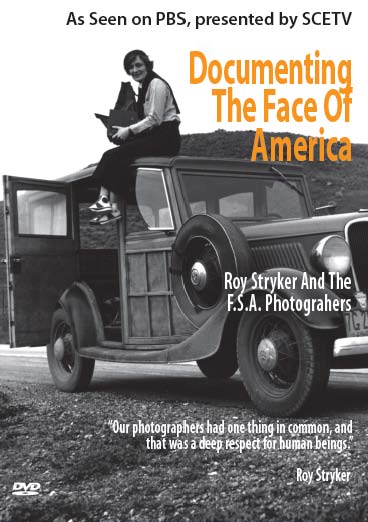A revealing look at Americans through photographs
With all due respect to our Olympians, the real Team USA's achievements can't be seen this week on NBC and its various cable networks live and on tape from Beijing. Instead, you have to go online, to lcweb2.loc.gov/ammem/fsowhome.html.
That's where you can find the more than 160,000 images taken by a small band of photographers who worked for the Farm Security Administration and Office of War Information between 1935 and 1943. They're the real Team USA - Walker Evans, Dorothea Lange, Ben Shahn, Russell Lee, Gordon Parks, to name just the most famous. The images they captured constitute the greatest work of public art in this nation's history: something all Americans can savor, take pride in, and even now, seven decades later, be moved by.
Although the story behind the FSA photographers has often been told, too few Americans are aware of it. Tonight it receives a slick and unsatisfying treatment in "Documenting the Face of America: Roy Stryker and the FSA/OWI Photographers" on Channel 2.
One of Franklin D. Roosevelt's more controversial New Deal programs, the Resettlement Administration was part of the Agriculture Department. It promoted on a small scale the relocation of tenant farmers, sharecroppers, and other rural poor. To calm conservatives, the administration's name soon became the more anodyne "farm security." In a further courting of public opinion, photographers were hired and sent out to record the conditions the FSA was seeking to remedy. Later their brief was expanded to photographing all of contemporary American society. The result was a visual archive of staggering depth and emotional richness.
"There's never really been anything else like it," the historian F. Jack Hurley says in the documentary. "And I think there never will be anything else like it." He's one of several talking heads who appear. Others include Parks, who died in 2006; Shahn's widow, Bernarda; and the photographer William Christenberry, a friend of Evans's. The narrator is Julian Bond.
Hurley's surely right. There's the sheer magnitude of what the FSA photographers accomplished. You can see it for yourself at the Library of Congress website. There's also the incongruity of the fact that the man behind it wasn't a photographer or curator but a onetime Columbia University economist. In fact, Roy Stryker's indifference to aesthetic concerns drove Evans, the FSA's star, to resign. Yet it also meant he was willing to take chances on little-known or untried photographers - chances that paid off many times over. Publicity (for the FSA) was what Stryker was after, not art. The miracle is that he got both.
The FSA photographers' images lay at the intersection of art, documentation, and propaganda. Anyone who has seen Lange's "Migrant Mother," which some have called the most famous photograph of the last century, or Evans's images of Alabama sharecroppers, which appear in James Agee's "Let Us Now Praise Famous Men," know how brilliantly they and their colleagues succeeded at all three tasks. The passage of time has softened and obscured the ideological thrust of much of the work - but that it was propagandistic there should be no doubt. Propaganda in a noble cause is still propaganda.
One reason these images endure is their visual chasteness. They don't hector and emote. The shame of "Documenting the Face of America" is that it doesn't trust its material. Bond's narration keeps telling the viewer what to think. Images slide and flash across the screen. A synth-driven score calls attention to itself, sonic counterpart to the documentary's hyped-up graphics. It's as if somebody at a production meeting said, "Uh-oh, how are we going to get people to look at all these still pictures in black and white?" The way you get people to look at them - or at least it is when they're this good - is just show them.
Mark Feeney can be reached at mfeeney@globe.com. ![]()
http://www.boston.com/ae/tv/articles/2008/08/18/a_revealing_look_at_americans_through_photographs/

No comments:
Post a Comment